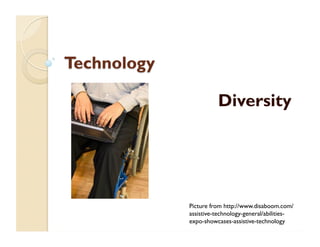The document discusses the role of technology and diversity in the science classroom. It provides examples of how teachers can use technology for classroom management, instruction, and student use. It also discusses differentiation and assistive technology to support diverse learners. Resources are shared on using technology to modify lessons and provide equitable access to science for all students.







































